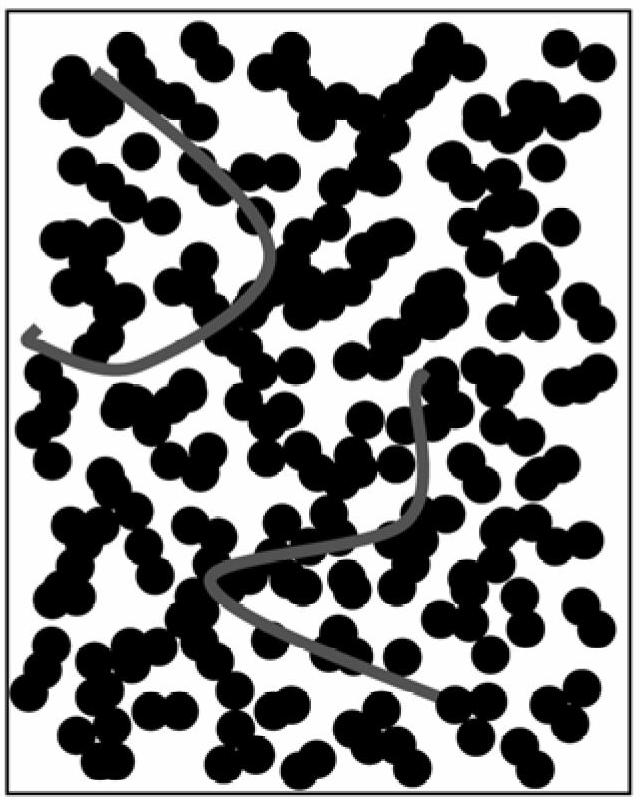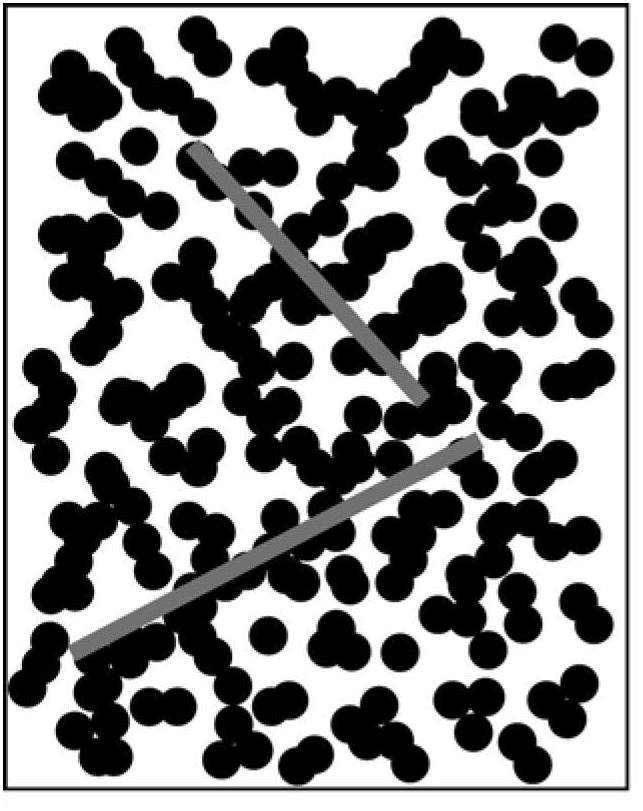Polymer conductive composite material with stable volume resistivity under temperature changes and preparation method thereof
A conductive composite material and volume resistivity technology, which is applied to conductive materials dispersed in non-conductive inorganic materials and other directions to achieve the effects of reducing PTC effect, simple preparation method and process, and stabilizing volume resistivity
- Summary
- Abstract
- Description
- Claims
- Application Information
AI Technical Summary
Problems solved by technology
Method used
Image
Examples
Embodiment 1
[0033] 1) Add 5gMWNT into 200mL xylene, heat up to 70°C after ultrasonication for 30 minutes at room temperature, add 45g ethylene-ethyl acrylate copolymer EEA, stir for 30min under condensing reflux; add 100mL absolute ethanol, filter; After drying at 90°C for 24 hours, it was shredded to obtain a premix with 10% MWNT content;
[0034] 2) Mix 7.5g of the premix and 21.1g of EEA in a Haake rheometer at 120°C and 60r / m for 30min; after heating up to 140°C, add 16gCB, 4g of polyethylene wax, 0.4g of antioxidant 1010, After mixing at / m for 8 minutes, cut into pieces and granulate;
[0035] 3) Mix the mixture in the previous step with the crosslinking agent DCP at a ratio of 49:1, and mix it on the open mill at 100°C for 6 minutes; then crosslink it on a flat vulcanizer at 180°C, 20MPa, and press for 12 minutes, and hold the pressure Cool to normal temperature to obtain a composite material. The schematic diagram of the conductive network inside the composite material is shown ...
Embodiment 2
[0037] 1) Mix 2.5g of graphene sheet GNP and 25.1g of EVA in a Haake rheometer at 120°C and 60r / m for 30min; after heating up to 140°C, add 17.5g of CB, 4g of polyethylene wax, and 0.4g of antioxidant 1010 , mixed at 45r / m for 8 minutes, then cut into pieces and granulated;
[0038] 2) Mix the mixture of the previous step and the cross-linking agent DCP at a ratio of 99:1, and mix it on an open mill at 100°C for 6 minutes; then cross-link it on a flat vulcanizer at 180°C, 20MPa, and press for 12 minutes, and hold the pressure Cool to normal temperature to obtain a composite material. The schematic diagram of the conductive network inside the composite material is shown in figure 2 , the volume resistivity curve of the obtained composite material as a function of temperature is as follows Figure 4 The curve in 2.
Embodiment 3
[0040] 1) Add 5g of carbon nanofiber CNF into 200mL of xylene, heat up to 70°C after ultrasonication for 30 minutes at room temperature, add 45g of ethylene-vinyl acetate copolymer EVA, stir for 30min under condensing reflux; add 100mL of absolute ethanol, filter ; The filtrate was dried at 90°C for 24 hours and then shredded to obtain a premix with 10% GNFs content;
[0041] 2) Mix 7.5g of the premix and 22.1g of EVA in a Haake rheometer at 120°C and 60r / m for 30min; after heating up to 140°C, add 16gCB, 4g of polyethylene wax, 0.4g of antioxidant 1010, After mixing at / m for 8 minutes, cut into pieces and granulate;
[0042] 3) Mix the mixture in the previous step with the crosslinking agent DCP at a ratio of 49:1, and mix it on the open mill at 100°C for 6 minutes; then crosslink it on a flat vulcanizer at 180°C, 20MPa, and press for 12 minutes, and hold the pressure Cool to normal temperature to obtain a composite material. The schematic diagram of the conductive network...
PUM
 Login to View More
Login to View More Abstract
Description
Claims
Application Information
 Login to View More
Login to View More - R&D
- Intellectual Property
- Life Sciences
- Materials
- Tech Scout
- Unparalleled Data Quality
- Higher Quality Content
- 60% Fewer Hallucinations
Browse by: Latest US Patents, China's latest patents, Technical Efficacy Thesaurus, Application Domain, Technology Topic, Popular Technical Reports.
© 2025 PatSnap. All rights reserved.Legal|Privacy policy|Modern Slavery Act Transparency Statement|Sitemap|About US| Contact US: help@patsnap.com



